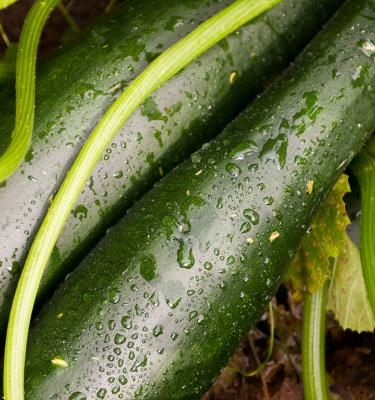

How to grow courgettes in New Zealand
Courgettes, also known as zucchini, are a summer staple in the vegetable garden. They are relatively easy to grow and can be eaten raw chopped or grated into salads, lightly steamed or roasted. Courgettes and marrows are actually the same thing - leave a courgette to mature on the plant and it will become a marrow! Modern courgette varieties have been bred to produce a lot of small, tasty fruit.
When to grow courgette
- Sow – August to November
- Plant – October to December
- Harvest – November to April
Courgette varieties to grow
Courgettes can be dark green, yellow or try growing light green scallopini – small space-ship shaped courgettes!
Varieties to try are BlackJack, Black Beauty (dark green), Solar Flare or Gold Rush (yellow), Scallopini ‘Patti Green Tint’ or ‘Scallop’.
Grow your courgette plant
Step 1
Fill a pot with a good quality seed raising mix such as Scotts Osmocote Seed Raising & Cutting Mix. Dampen the mix before planting your zucchini seed.
Step 2
Push one seed 2cm deep into each pot and lightly cover with mix. Water well.
Step 3
Place in a warm spot to germinate. Keep mix damp, not wet so the seed does not rot, germination should take about 10 days.
Step 4
Once the seedling emerges place in bright light, not direct sunlight, turn the pot daily to ensure even growth.
Step 5
When the seedlings are at least 5cm tall and have 3-4 true leaves, they are ready for planting into the garden or in pots.
Tips
Courgettes are frost tender plants so in cooler regions do not plant until the risk of frost has passed.
Before planting harden off plants by placing the pots outside during the day and bringing in at night for up to 7 days. Once seedlings are hardened off they are ready for planting.
Planting courgette in the garden
Step 1
Plant in a sunny sheltered spot in the garden into soil that has had generous amounts of Scotts Osmocote Compost and Soil Improver added before planting.
Step 2
Before planting soak plants in a bucket of water until bubbles stop rising and drain. Dig a hole twice the width and depth of the root ball, gently loosen the root ball.
Step 3
Into each planting hole add Scotts Osmocote Vegetable, Tomato and Herb Controlled Release Fertiliser at the recommended rate and mix into the soil.
Step 4
Place the seedling into the centre of the planting hole and backfill, pressing gently as you go. Water in well. Space plants 1 metre apart.
Step 5
Continue to water consistently throughout the growing season, keep the soil moist, but not wet, and avoid wetting the foliage.
Tip
Planting courgettes on top of mounds helps improve air circulation around plants and lessens the chance of powdery mildew spreading.
Planting courgette in pots and containers
Step 1
Choose a large 30-50cm size container with drainage holes in the bottom and part-fill with Scotts Osmocote Premium Potting Mix.
Step 2
Soak the plants in a bucket of water until the bubbles top rising to the top. Place the courgette seedlings in the centre of the container and fill until 3cm from the top of the container, firming as you go. Water in well.
Step 3
Place pots in a sunny sheltered spot and ensure plants are regularly watered, don’t allow to dry out.
Tips
When watering avoid wetting the foliage as this helps spread disease such as powdery mildew.
Water consistently keeping the soil moist, courgettes are susceptible to blossom end rot, which can be caused by insufficient water, or a nutrient deficiency of calcium and magnesium.
Courgette plant maintenance and care
- Once flowering starts, feed plants every 2-4 weeks with Performance Naturals Tomato, Vegetable and Herb Liquid Fertiliser.
- Water in the morning rather than the evening so that wet soil and foliage has time to dry out during the day.
Pollination
Courgette plants have male and female flowers, however only the female flowers produce fruit. Once the male flowers open and release their pollen, they fall off. The female flowers (which have a small swollen base) need to be pollinated by the male flowers. If the bees aren't doing their job so well, you can do this by hand or with a small paint brush by rubbing the pollen from the male flower onto the female flower. Often at the start of the season courgette plants produce more male flowers to ensure there's plenty of pollen for when the female flowers open.
Harvesting courgette
Harvest courgettes when they are 10-12cm long. At this length they are at their sweetest and most tender.
They produce large crops, so one or two plants is all that's needed to feed even the largest family.
Regular picking when they are small ensures a long cropping period over several months. If you want marrow, leave the courgette to swell and grow large.



